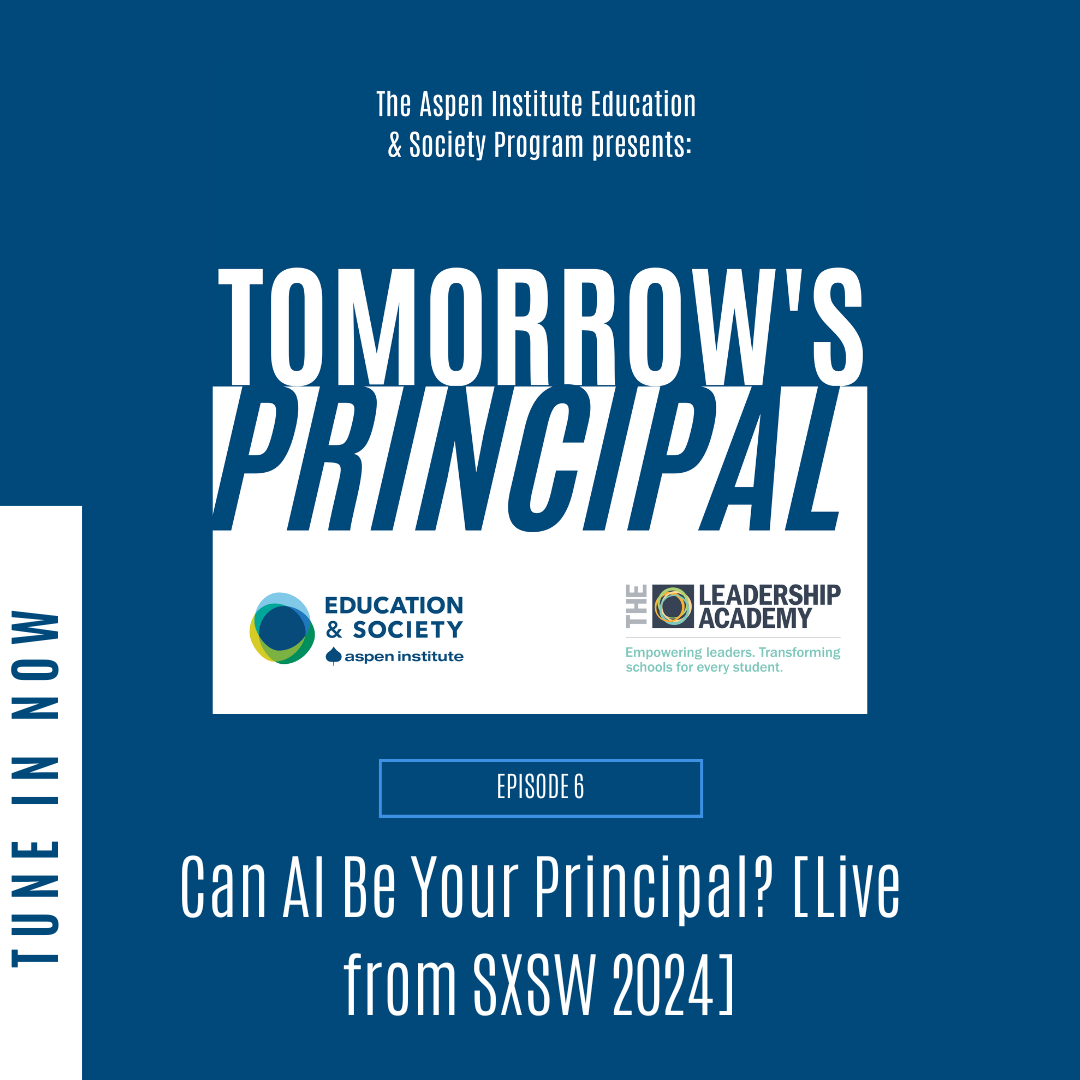 Panelists
Panelists
– Gene Pinkard, Director of K-12 Leadership, Aspen Education & Society Program
– Nancy Gutierrez, Executive Director, The Leadership Academy
– Eva Mejia, Executive Director, IDEO
– Kevin Polston, Superintendent, Kentwood Public SchoolsThis year at SXSW EDU, we once again teamed up with The Leadership Academy to facilitate a conversation on the role of Artificial Intelligence (AI) in the field of education, specifically in relation to school leadership. The panelists discussed the potential benefits and challenges of integrating AI into school leadership and teaching, and how it could change the role of school principals. They also explored the implications of AI for equity and access in education. Here are three takeaways from the discussion.
Takeaway 1: AI can help principals focus on the “human” work
The panelists agreed that the introduction of AI in schools has the potential to change the role of school principals, making their jobs more manageable and sustainable by automating certain tasks and allowing them to focus more on human connections and strategic responsibilities that directly impact learning outcomes. They discussed how AI could improve efficiency, personalize learning, and create more time for personal interactions. Kevin Polston said, “If time is our most precious commodity, and humans are the most important value that we have in our organizations, how do you then create more time for your people to do those innately human things that change outcomes for kids?”
Takeaway 2: The implementation of AI in schools must take into account issues of equity and the potential for bias in AI design.
Nancy Gutierrez emphasized the importance of diverse representation in the design and implementation of AI in schools to ensure it benefits all students equitably. She highlighted the importance of considering bias in design, using several examples to illustrate, including the initial designs of self-driving cars and YouTube mobile interface, which inadvertently excluded or disadvantaged certain groups of people. Nancy also raised questions about the disparities in AI usage and its impacts in different communities, specifically between affluent and low-income communities. Gene Pinkard highlighted historical trends where the communities with the greatest need are sometimes last to have access and opportunity to capitalize on innovative solutions.
Takeaway 3: The role of education leaders must evolve in line with technological advancements, with a focus on leading change and fostering a culture of innovation.
Eva Mejia spoke about the importance of involving educators in the design process, highlighting the need for transparency and innovation to happen inside schools. “I think for this, you want to innovate with open windows. What if we did have to face and see the students, be proximate, and really have all of our technology and all of our ideas be public? What would that do for innovation?” she asked. The panelists also said that a shift in mindset towards AI is crucial for its successful implementation in schools. They suggested that schools must be proactive in learning about and adopting AI, rather than being passive recipients and stressed the importance of preparing school leaders to effectively navigate this change. Gene Pinkard said, “So if we lead as learners, it’s not just the instructional leader….It’s the tone-setter for adult and student learning, growth, and continuous improvement.” He advocated for school leaders to “embrace the notion” of AI and to “take hold of it and wield it” to maximize its potential benefits.
The panelists left the audience with four questions to think about:
1. How can AI allow us to focus on the skills that are more uniquely human, particularly those for the principal?
2. Do you want to use AI to optimize something or to redesign it?
3. What is the role of tomorrow’s principal- what do we want them to know, be able to do, and achieve as the school leader?
4. What if we tried it?

